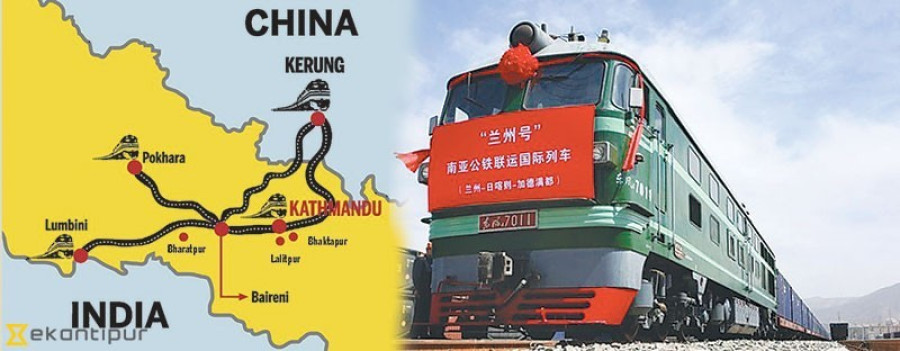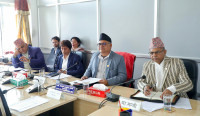National
China urges Nepal to wait, as Kerung-Kathmandu railway will take more than seven years
There are a lot of technical, engineering and geological reasons to consider before commending with a detailed project report, Chinese officials said.
Anil Giri
Chinese railway officials have said that the much-awaited detailed project report Kerung-Kathmandu cross-border railway will take a lot more time to materialise due to technical, engineering and geological reasons, urging Nepalis to wait.
During the fourth Nepal-China Railway Cooperation Committee meeting in Beijing, Chinese railway officials categorically told Nepali officials that they would have to determine and settle a number of technical, engineering, geological and environmental challenges before even preparing a detailed project report for the proposed railway line, according to a Nepali official present at the meeting. The official refused to be identified citing the sensitivity of the matter.
China considers the cross-border railway a mid- and long-term plan. The mid-term is between 5-7 years while long term planning, according to the Chinese, is beyond a seven-year timeframe.
“According to Chinese 13th Fifth Year Plan that is going to end in 2020, the proposed Shigatse to Gyirong (Kerung) railway was expected to be completed in 2010 but that deadline has moved to 2025. Once the construction of that line is complete, only then will the designing of Kerung-Kathmandu begin,” said the member of the Nepali delegation.
Before leaving for Beijing, Nepali officials had hoped that the fourth meeting would reach some kind of consensus on expediting the detailed project report for Kerung-Kathmandu railway along with feasibility work on the Kathmandu-Pokhara-Lumbini railway tracks. Officials had also expected more clarity regarding the Rs2 billion grant from the Chinese and where it would be channeled.
“Chinese officials said that they were committed to connecting the Chinese railway to Nepal but needed more time to study the field and examine various technical and engineering aspects before commencing on the detailed project report,” Sushil Lamsal, deputy chief of mission at the Nepali Embassy in Beijing, told the Post over the phone.
The detailed project report will now be discussed during the fifth committee meeting, scheduled for December in Kathmandu, according to officials.
The Chinese will also help train Nepali engineers on railway engineering in China, along with skill development for Nepali technicians and engineers, according to the Nepali Embassy in Beijing. The First Survey and Design Institute of China has provided 13 training slots for Nepali engineers in Xian.
Devendra Karki, secretary at the Ministry of Physical Infrastructure, led the Nepali delegation while the Chinese delegation was headed by An Lusheng, deputy administrator at the National Railway Administration of China.
China’s railway administration had handed over the feasibility study for the Kerung-Kathmandu railway to Nepal’s Ministry of Physical Infrastructure in December last year. The feasibility study had already indicated that the cross-border railway would be a challenging engineering feat due to seismic, topography, altitude, geology and engineering concerns. Engineering crews would need to build ramps along the northern and southern slopes leading to Lake Paiku, near Kerung, to connect tracks to the Kathmandu section. The ramps would overcome great differences in elevation between the southern and northern toes of the Himalayan mountains.




 16.12°C Kathmandu
16.12°C Kathmandu
.jpg&w=200&height=120)














